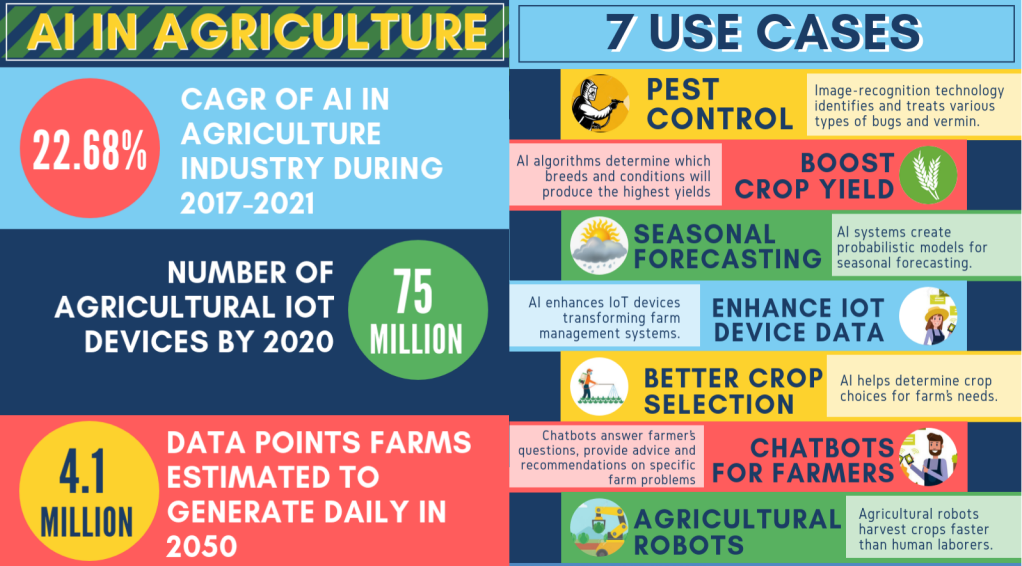Agriculture
Artificial Intelligence & Agriculture
This article is based on “AI for the farmer” which was published in The Indian Express on 26/11/2020. It talks about the application of artificial intelligence in Indian agriculture.
As the world population continues to grow and land becomes more scarce, people need to get creative and become more efficient about how agriculture is done. This would require the use of less land to produce more crops and increasing productivity and yield.
Moreover, Indian agriculture faces multiple challenges like high dependence on monsoon, resource intensiveness – heavy use of resources (water, inorganic fertilisers and pesticides), degradation of land and loss of soil fertility, and low per hectare yield, among others.
In this context, Artificial Intelligence (AI) can play a catalytic role in improving crop yield from various factors like the climate changes, population growth, employment issues and food security problems.
Scope of AI in the Agriculture
- Augmenting Entire Supply Chain: Worldwide, agriculture is a $5 trillion industry, and AI technologies can help to yield healthier crops, control pests, monitor soil and growing conditions, organize data for farmers, help with the workload, and improve a wide range of agriculture-related tasks in the entire food supply chain.
- Opportunity for High Growth: Globally, AI applications in agriculture reached a valuation of nearly $ 1 billion in 2019 and this is estimated to grow to almost $8 billion by 2030, a nearly 25% growth.
- However, in this scenario, the Indian agri-tech market, presently valued at $204 million, has reached just 1% of its estimated potential of $ 24 billion.
- Huge Agricultural Data Resource: Due to the diversity of its soil types, climate and topography, India provides a great opportunity for the data scientists and AI experts to develop state of the art AI tools and solutions for agriculture.
- Indian farms and farmers provide vast and rich data to help create AI solutions for not just the country but the world at large. And this is one of the factors that makes the opportunity for AI in Indian agriculture unparalleled.
Use of AI in Agriculture
- AI Helping Analyze Farm Data: Farms produce hundreds of thousands of data points on the ground daily. With the help of AI, farmers can now analyze a variety of things in real-time such as weather conditions, temperature, water usage or soil conditions collected from their farm to better inform their decisions.
- Farmers are also using AI to create seasonal forecasting models to improve agricultural accuracy and increase productivity.
- Precision Agriculture: Precision agriculture uses AI technology to aid in detecting diseases in plants, pests, and poor plant nutrition on farms.
- AI sensors can detect and target weeds and then decide which herbicides to apply within the right buffer zone.
- This helps to prevent over-application of herbicides and excessive toxins that find their way in our food.
- It would increase productivity by introducing precision agriculture.
- Tackling the Labour Challenge: With fewer people entering the farming profession, most farms are facing the challenge of a workforce shortage.
- One solution to help with this shortage of workers is AI agriculture bots. These bots augment the human labour workforce and are used in various forms. For example:
- These bots can harvest crops at a higher volume and faster pace than human labourers, more accurately identify and eliminate weeds, and reduce costs for farms by having around the clock labour force.
- Additionally, farmers are beginning to turn to chatbots for assistance. Chatbots help answer a variety of questions and provide advice and recommendations on specific farm problems.
- One solution to help with this shortage of workers is AI agriculture bots. These bots augment the human labour workforce and are used in various forms. For example:
Conclusion
With the recent reforms in the Agriculture sector, there is a likelihood of increased investments in contract farming and infusion of technology for better yields and productivity. This will further push the adoption of AI in agriculture. Further, In order to help these AI solutions scale increased investments needed, both from the public and private sector.
In this context, the recently concluded Responsible AI for Social Empowerment Summit – RAISE – 2020 Summit has helped provide a platform for global stakeholders to come together to finalize the roadmap for using AI for the public good.
|
Drishti Mains Question Artificial Intelligence can play a catalytic role in improving food security in India. Discuss. |
This editorial is based on “Need new laws for real-time tax dispute resolution” which was published in The Financial Express on November 26th, 2020. Now watch this on our Youtube channel.





